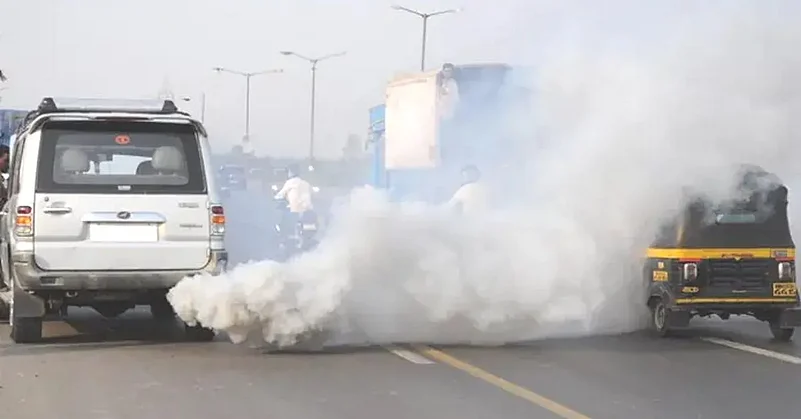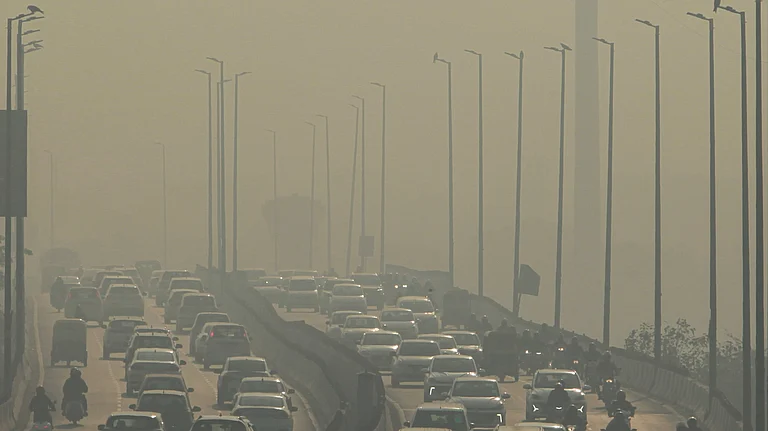End-of-life vehicles (ELVs) in the Delhi-National Capital Region (NCR) may soon be refused fuel if caught, reported Mint citing officials aware of the city's efforts to curb pollution.
As per the report, the government has set up a panel for strategising and potentially restricting commercial vehicles with engines below BS-VI standards from entering Delhi, to curb air pollution in Delhi-NCR.
This move is expected to have a ripple effect on surrounding states such as Uttar Pradesh, Rajasthan and Haryana, which contribute to the region's air pollution.
In Delhi-NCR, diesel vehicles older than 10 years and petrol vehicles older than 15 years are considered end-of-life vehicles. These vehicles, having surpassed their useful lifespan, are no longer legally registered and are associated with high levels of pollution. According to officials, such vehicles may face fuel restrictions as early as February, as fuel stations have been instructed to install automatic number plate recognition (ANPR) systems, reported the Mint. Once installed, petrol pumps may refuse fuel to defaulters, it added.
This initiative forms part of a wider set of measures to address the recurring air quality crisis in the national capital, which worsens especially during the winter months. Contributing factors include vehicular emissions, slow wind speeds, stubble burning, and other meteorological conditions.
Air quality peaks during two key periods: one during the stubble burning season and another during December-January, which is primarily driven by meteorological factors and vehicular pollution.
What Are BS-VI Emission Norms?
Bharat stage (BS) emission standards are laid down by the government to regulate the output of air pollutants from internal combustion engine vehicles, including motor vehicles.
The central government has mandated that vehicle makers must manufacture, sell and register only BS-VI vehicles from April 1, 2020. The BS-VI emission standards include light-duty passenger and commercial vehicles. The standards are defined separately for vehicles with spark ignition and compression ignition engines. In both cases though, emission limits align with Euro 6 standards for similar engine types.
The first emission norms were introduced in India in 1991 for petrol and in 1992 for diesel vehicles, reported the Business Standard. Over the years, there have been several revisions to the BS emission norms, with a major thrust towards enforcing stricter regulations. In 2019, however, amid worsening air pollution crisis in Delhi-NCR, there was a fresh push towards further stringency.
Health Impacts
One of the key changes under BS-VI is the introduction of low-sulfur fuel reported The Indian Express. BS-VI fuel is expected to reduce sulfur content by approximately 80 per cent, from 50 parts per million (ppm) to just 10 ppm. This reduction is crucial because sulfur in fuel contributes to the formation of harmful sulfur oxides, which can damage both the environment and human health.
Additionally, the nitrogen oxide (NOx) emissions from diesel vehicles are expected to decrease by nearly 70 per cent and 25 per cent from petrol vehicles, significantly improving air quality.
The United States Environmental Protection Agency (EPA) has warned about the dangers of short-term exposure to high levels of NOx, which can exacerbate respiratory diseases like asthma and contribute to long-term health problems. Similarly, sulfur oxides at high concentrations can harm plants and trees by damaging foliage and stunting growth.
An Uneasy Transition
The implementation of BS-VI standards came with its own set of challenges. When the government announced the shift to BS-VI norms in 2016, automobile manufacturers raised concerns about their unsold stock of BS-IV vehicles. According to The Indian Express, manufacturers requested more time to sell their inventory and demanded the introduction of higher-grade fuel in tandem with the roll out of BS-VI norms. Manufacturers also alleged that using BS-VI fuel in BS-IV engines or running BS-VI vehicles on BS-IV fuel might not actually reduce pollution. On the contrary, such usage could end up damaging engines, they claimed.
Despite these concerns, the Union Ministry of Petroleum decided to accelerate the rollout of BS-VI fuels. On November 15, 2017, the ministry, in consultation with oil marketing companies (OMCs), advanced the introduction of BS-VI fuels in Delhi to April 2018. In fact, the ministry even explored the possibility of introducing BS-VI fuels throughout the Delhi-NCR region by April 2019.
The decision was met with resistance from the automotive industry, as manufacturers had already planned their production schedules based on the original 2020 timeline. This shift created significant challenges for automakers and the fuel distribution system. In 2016, the government announced that the country would skip the BS-V norms altogether and adopt BS-VI norms by 2020.
In a recent judgment, the Supreme Court banned the sale and registration of BS-IV compliant motor vehicles in the entire country from 1 April 2020.
The stringent BS-VI norms eventually led to several significant changes in the automotive industry. With the roll out of the new BS-VI emission norms in 2020, several Indian carmakers rationalised their portfolio. As per a Business Standard report, India’s biggest carmaker Maruti completely discontinued diesel models. Tata Motors, another big brand, reportedly discontinued smaller-capacity diesel engines.






























